The Botanical Supplements market is expected to grow from USD 29.86 billion in 2020 to USD 52.11 billion by 2028, at a CAGR of 7.21% during the forecast period 2021-2028.
Botanical supplements, sometimes called herbs or herbal supplements or plant supplements, are products made from plants or plant extracts. They are meant to be consumed as they contain necessary ingredients intended to supplement the diet. The National Government Survey found that natural products, including nutritional supplements, are used by nearly 18% of adults. These plant supplements are used in traditional and complementary medicine and come in many forms, including tablets, capsules, soft gels, gel caps, liquids and powders. Plants are sold in many forms as fresh and dried plant material. For example, the produce aisle in the supermarket contains fresh ginger root, while dried ginger root can be found in a supplement aisle in capsule or tablet form, tea bags, or liquid preparation. Chemicals can also be isolated from a vegan plant and sold as supplements, usually in tablets or capsules. For example, phytoestrogens from soy products are sold as dietary supplements.
The factors driving the market are the increase in health awareness and the increase in the interest in the diet. Additionally, increasing awareness of the benefits of plant-based supplements, changing eating habits, and increasing urban population are the other factors that are anticipated to increase the demand for various plant-based supplements in the forecast period. The producers launch a new product with innovative ingredients to cater to the growing demand for different botanical supplements. In addition, the companies are rapidly adopting growth strategies to expand their geographical presence across the globe. Product withdrawal due to some pollution due to prolonged storage of plant supplements and strict government rules are the factors expected to hinder the growth of the target market to a certain extent.
This study delivers a comprehensive analysis of form, source and application. The form segment includes tablets and liquids. Tablets led the market in 2020, and an increasing consumer trend towards tablets and capsules due to their ease of consumption has led to the growth of this segment. The source segment includes flowers and leaves. Leaves led the market in 2020, and herbs and platings have been used since ancient times to produce plant medicines. However, it has gained remarkable popularity due to the changing trend of consumers to use natural products instead of synthetic ones. The application segment consists of anti – cancer, energy and weight management. The energy and weight management applications sector led the market. This is due to the increasing trend of online weight loss programs and government initiatives to promote a healthy diet.
The market has been divided into North America, Europe, Asia-Pacific, Middle East & Africa, and South America. The growing awareness of nutritional supplements infused with plant-based ingredients and the increased consumption of dietary supplements is an essential factor driving the industry's growth in the region. The European region captured a large share of revenue in 2020 and is expected to see significant growth over the forecast period. The influence of individuals with their peer group, neighbors, families, celebrity magazines and higher disposable income is expected to boost industry growth in this region during the forecast period.
Key players in the market are Dabur India, Nutraceutical International Company, Mondelez International, The Himalaya Drug Company, Blackmores Limited, Ricola AG., Procter and Gamble, NBTY Inc. and BASF SE.
Botanical Supplements Market Analysis and Forecast, Form
Botanical Supplements Market Analysis and Forecast, Source
Botanical Supplements Market Analysis and Forecast, Application
Botanical Supplements Market Analysis and Forecast, Region
Report Description:
1. Introduction
1.1. Objectives of the Study
1.2. Market Definition
1.3. Research Scope
1.4. Currency
1.5. Key Target Audience
2. Research Methodology and Assumptions
3. Executive Summary
4. Premium Insights
4.1. Porter’s Five Forces Analysis
4.2. Value Chain Analysis
4.3. Top Investment Pockets
4.3.1. Market Attractiveness Analysis By Form
4.3.2. Market Attractiveness Analysis By Source
4.3.3. Market Attractiveness Analysis By Application
4.3.4. Market Attractiveness Analysis By Region
4.4. Industry Trends
5. Market Dynamics
5.1. Market Evaluation
5.2. Drivers
5.2.1. The increase in health awareness
5.3. Restraints
5.3.1. Product withdrawal due to some pollution due to prolonged storage
5.3.2. Strict government rules
5.4. Opportunities
5.4.1. Companies adopting growth strategies
6. Global Botanical Supplements Market Analysis and Forecast, By Form
6.1. Segment Overview
6.2. Tablets
6.3. Liquids
7. Global Botanical Supplements Market Analysis and Forecast, By Source
7.1. Segment Overview
7.2. Flowers
7.3. Leaves
8. Global Botanical Supplements Market Analysis and Forecast, By Application
8.1. Segment Overview
8.2. Energy and weight management
8.3. Anti – Cancer
9. Global Botanical Supplements Market Analysis and Forecast, By Regional Analysis
9.1. Segment Overview
9.2. North America
9.2.1. U.S.
9.2.2. Canada
9.2.3. Mexico
9.3. Europe
9.3.1. Germany
9.3.2. France
9.3.3. U.K.
9.3.4. Italy
9.3.5. Spain
9.4. Asia-Pacific
9.4.1. Japan
9.4.2. China
9.4.3. India
9.5. South America
9.5.1. Brazil
9.6. Middle East and Africa
9.6.1. UAE
9.6.2. South Africa
10. Global Botanical Supplements Market-Competitive Landscape
10.1. Overview
10.2. Market Share of Key Players in Global Botanical Supplements Market
10.2.1. Global Company Market Share
10.2.2. North America Company Market Share
10.2.3. Europe Company Market Share
10.2.4. APAC Company Market Share
10.3. Competitive Situations and Trends
10.3.1. Source Launches and Developments
10.3.2. Partnerships, Collaborations, and Agreements
10.3.3. Mergers & Acquisitions
10.3.4. Expansions
11. Company Profiles
11.1. Dabur India
11.1.1. Business Overview
11.1.2. Company Snapshot
11.1.3. Company Market Share Analysis
11.1.4. Company Source Portfolio
11.1.5. Recent Developments
11.1.6. SWOT Analysis
11.2. Nutraceutical International Company
11.2.1. Business Overview
11.2.2. Company Snapshot
11.2.3. Company Market Share Analysis
11.2.4. Company Source Portfolio
11.2.5. Recent Developments
11.2.6. SWOT Analysis
11.3. Mondelez International
11.3.1. Business Overview
11.3.2. Company Snapshot
11.3.3. Company Market Share Analysis
11.3.4. Company Source Portfolio
11.3.5. Recent Developments
11.3.6. SWOT Analysis
11.4. The Himalaya Drug Company
11.4.1. Business Overview
11.4.2. Company Snapshot
11.4.3. Company Market Share Analysis
11.4.4. Company Source Portfolio
11.4.5. Recent Developments
11.4.6. SWOT Analysis
11.5. Blackmores Limited
11.5.1. Business Overview
11.5.2. Company Snapshot
11.5.3. Company Market Share Analysis
11.5.4. Company Source Portfolio
11.5.5. Recent Developments
11.5.6. SWOT Analysis
11.6. Ricola AG.
11.6.1. Business Overview
11.6.2. Company Snapshot
11.6.3. Company Market Share Analysis
11.6.4. Company Source Portfolio
11.6.5. Recent Developments
11.6.6. SWOT Analysis
11.7. Procter and Gamble
11.7.1. Business Overview
11.7.2. Company Snapshot
11.7.3. Company Market Share Analysis
11.7.4. Company Source Portfolio
11.7.5. Recent Developments
11.7.6. SWOT Analysis
11.8. NBTY Inc.
11.8.1. Business Overview
11.8.2. Company Snapshot
11.8.3. Company Market Share Analysis
11.8.4. Company Source Portfolio
11.8.5. Recent Developments
11.8.6. SWOT Analysis
11.9. BASF SE.
11.9.1. Business Overview
11.9.2. Company Snapshot
11.9.3. Company Market Share Analysis
11.9.4. Company Source Portfolio
11.9.5. Recent Developments
11.9.6. SWOT Analysis
List of Table
1. Global Botanical Supplements Market, By Form, 2018 - 2028 (USD Billion)
2. Global Tablets, Botanical Supplements Market, By Region, 2018 - 2028 (USD Billion)
3. Global Liquids, Botanical Supplements Market, By Region, 2018 - 2028 (USD Billion)
4. Global Botanical Supplements Market, By Source, 2018 - 2028 (USD Billion)
5. Global Flowers, Botanical Supplements Market, By Region, 2018 - 2028 (USD Billion)
6. Global Leaves, Botanical Supplements Market, By Region, 2018 - 2028 (USD Billion)
7. Global Botanical Supplements Market, By Application, 2018 - 2028 (USD Billion)
8. Global Anti – Cancer, Botanical Supplements Market, By Region, 2018 - 2028 (USD Billion)
9. Global Energy and Weight Management, Botanical Supplements Market, By Region, 2018 - 2028 (USD Billion)
10. North America Botanical Supplements Market, By Form, 2018 - 2028 (USD Billion)
11. North America Botanical Supplements Market, By Source, 2018 - 2028 (USD Billion)
12. North America Botanical Supplements Market, By Application, 2018 - 2028 (USD Billion)
13. U.S. Botanical Supplements Market, By Form, 2018 - 2028 (USD Billion)
14. U.S. Botanical Supplements Market, By Source, 2018 - 2028 (USD Billion)
15. U.S. Botanical Supplements Market, By Application, 2018 - 2028 (USD Billion)
16. Canada Botanical Supplements Market, By Form, 2018 - 2028 (USD Billion)
17. CanadaBotanical Supplements Market, By Source, 2018 - 2028 (USD Billion)
18. Canada Botanical Supplements Market, By Application, 2018 - 2028 (USD Billion)
19. Mexico Botanical Supplements Market, By Form, 2018 - 2028 (USD Billion)
20. Mexico Botanical Supplements Market, By Source, 2018 - 2028 (USD Billion)
21. Mexico Botanical Supplements Market, By Application, 2018 - 2028 (USD Billion)
22. Europe Botanical Supplements Market, By Form, 2018 - 2028 (USD Billion)
23. Europe Botanical Supplements Market, By Source, 2018 - 2028 (USD Billion)
24. Europe Botanical Supplements Market, By Application, 2018 - 2028 (USD Billion)
25. Germany Botanical Supplements Market, By Form, 2018 - 2028 (USD Billion)
26. Germany Botanical Supplements Market, By Source, 2018 - 2028 (USD Billion)
27. Germany Botanical Supplements Market, By Application, 2018 - 2028 (USD Billion)
28. France Botanical Supplements Market, By Form, 2018 - 2028 (USD Billion)
29. France Botanical Supplements Market, By Source, 2018 - 2028 (USD Billion)
30. France Botanical Supplements Market, By Application, 2018 - 2028 (USD Billion)
31. U.K. Botanical Supplements Market, By Form, 2018 - 2028 (USD Billion)
32. U.K. Botanical Supplements Market, By Source, 2018 - 2028 (USD Billion)
33. U.K. Botanical Supplements Market, By Application, 2018 - 2028 (USD Billion)
34. Italy Botanical Supplements Market, By Form, 2018 - 2028 (USD Billion)
35. Italy Botanical Supplements Market, By Source, 2018 - 2028 (USD Billion)
36. Italy Botanical Supplements Market, By Application, 2018 - 2028 (USD Billion)
37. Spain Botanical Supplements Market, By Form, 2018 - 2028 (USD Billion)
38. Spain Botanical Supplements Market, By Source, 2018 - 2028 (USD Billion)
39. Spain Botanical Supplements Market, By Application, 2018 - 2028 (USD Billion)
40. Asia Pacific Botanical Supplements Market, By Form, 2018 - 2028 (USD Billion)
41. Asia Pacific Botanical Supplements Market, By Source, 2018 - 2028 (USD Billion)
42. Asia Pacific Botanical Supplements Market, By Application, 2018 - 2028 (USD Billion)
43. Japan Botanical Supplements Market, By Form, 2018 - 2028 (USD Billion)
44. Japan Botanical Supplements Market, By Source, 2018 - 2028 (USD Billion)
45. Japan Botanical Supplements Market, By Application, 2018 - 2028 (USD Billion)
46. China Botanical Supplements Market, By Form, 2018 - 2028 (USD Billion)
47. China Botanical Supplements Market, By Source, 2018 - 2028 (USD Billion)
48. China Botanical Supplements Market, By Application, 2018 - 2028 (USD Billion)
49. India Botanical Supplements Market, By Form, 2018 - 2028 (USD Billion)
50. India Botanical Supplements Market, By Source, 2018 - 2028 (USD Billion)
51. India Botanical Supplements Market, By Application, 2018 - 2028 (USD Billion)
52. South America Botanical Supplements Market, By Form, 2018 - 2028 (USD Billion)
53. South America Botanical Supplements Market, By Source, 2018 - 2028 (USD Billion)
54. South America Botanical Supplements Market, By Application, 2018 - 2028 (USD Billion)
55. Brazil Botanical Supplements Market, By Form, 2018 - 2028 (USD Billion)
56. Brazil Botanical Supplements Market, By Source, 2018 - 2028 (USD Billion)
57. Brazil Botanical Supplements Market, By Application, 2018 - 2028 (USD Billion)
58. Middle East and Africa Botanical Supplements Market, By Form, 2018 - 2028 (USD Billion)
59. Middle East and Africa Botanical Supplements Market, By Source, 2018 - 2028 (USD Billion)
60. Middle East and Africa Botanical Supplements Market, By Application, 2018 - 2028 (USD Billion)
61. UAE Botanical Supplements Market, By Form, 2018 - 2028 (USD Billion)
62. UAE Botanical Supplements Market, By Source, 2018 - 2028 (USD Billion)
63. UAE Botanical Supplements Market, By Application, 2018 - 2028 (USD Billion)
64. South Africa Botanical Supplements Market, By Form, 2018 - 2028 (USD Billion)
65. South Africa Botanical Supplements Market, By Source, 2018 - 2028 (USD Billion)
66. South Africa Botanical Supplements Market, By Application, 2018 - 2028 (USD Billion)
List of Figures
1. Global Botanical Supplements Market Segmentation
2. Global Botanical Supplements Market: Research Methodology
3. Market Size Estimation Methodology: Bottom-Up Approach
4. Market Size Estimation Methodology: Top-Down Approach
5. Data Triangulation
6. Porter’s Five Forces Analysis
7. Value Chain Analysis
8. Global Botanical Supplements Market Attractiveness Analysis By Form
9. Global Botanical Supplements Market Attractiveness Analysis By Source
10. Global Botanical Supplements Market Attractiveness Analysis By Application
11. Global Botanical Supplements Market Attractiveness Analysis By Region
12. Global Botanical Supplements Market: Dynamics
13. Global Botanical Supplements Market Share by Form(2021 & 2028)
14. Global Botanical Supplements Market Share by Source (2021 & 2028)
15. Global Botanical Supplements Market Share by Regions (2021 & 2028)
16. Global Botanical Supplements Market Share by Company (2020)
Market research is a method of gathering, assessing and deducing data & information about a particular market. Market research is very crucial in these days. The techniques analyze about how a product/service can be offered to the market to its end-customers, observe the impact of that product/service based on the past customer experiences, and cater their needs and demands. Owing to the successful business ventures, accurate, relevant and thorough information is the base for all the organizations because market research report/study offers specific market related data & information about the industry growth prospects, perspective of the existing customers, and the overall market scenario prevailed in past, ongoing present and developing future. It allows the stakeholders and investors to determine the probability of a business before committing substantial resources to the venture. Market research helps in solving the marketing issues challenges that a business will most likely face.
Market research is valuable because of the following reasons:
Our research report features both the aspects; qualitative and quantitative. Qualitative part provides insights about the market driving forces, potential opportunities, customer’s demands and requirement which in turn help the companies to come up with new strategies in order to survive in the long run competition. The quantitative segment offers the most credible information related to the industry. Based on the data gathering, we use to derive the market size and estimate their future growth prospects on the basis of global, region and country.
Our market research process involves with the four specific stages.

Data Collection: This stage of the market research process involves with the gathering and collecting of the market/industry related data from the sources. There are basically two types of research methods:
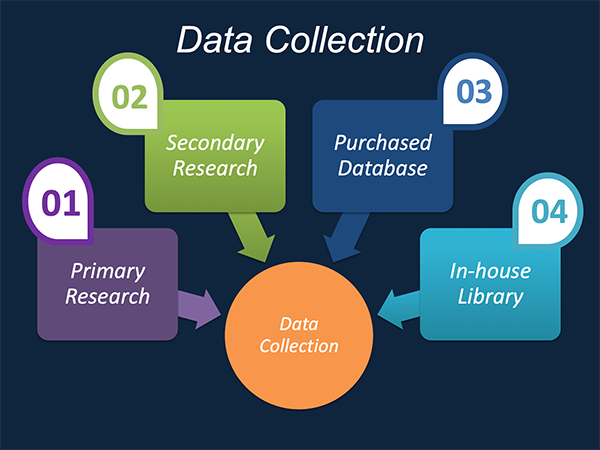
Data Synthesis: This stage includes the evaluation and assessment of all the data acquired from the primary and secondary research. It likewise includes in evaluating the information for any disparity watched while information gathering identified with the market. The data & information is gathered with consideration to the heterogeneity of sources. Scientific and statistical methods are implemented for synthesizing dissimilar information sets and provide the relevant data which is fundamental for formulating strategies. Our organization has broad involvement with information amalgamation where the information goes through different stages:


Market Formulation & Deduction: The last stage includes assigning the data & information in a suitable way in order to derive market size. Analyst reviews and domain based opinions based on holistic approach of market estimation combined with industry investigation additionally features a crucial role in this stage.
This stage includes with the finalization of the market size and numbers that we have gathered from primary and secondary research. With the data & information addition, we ensure that there is no gap in the market information. Market trend analysis is finished by our analysts by utilizing data extrapolation procedures, which give the most ideal figures to the market.
Data Validation: Validation is the most crucial step in the process. Validation & re-validation through scientifically designed technique and process that helps us finalize data-points to be used for final calculations. This stage also involves with the data triangulation process. Data triangulation generally implicates the cross validation and matching the data which has been collected from primary and secondary research methods.





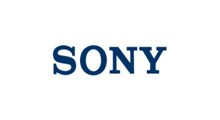

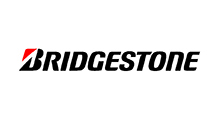

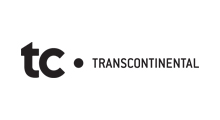















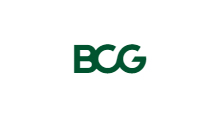


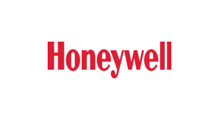

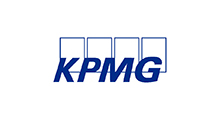
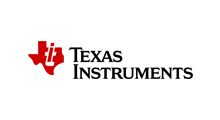



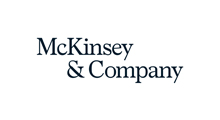

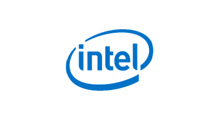







Free Customization
Countries can be added on demand
Free yearly update on purchase of Multi/Corporate User License
Companies served till date

We serve our customers 24x7 for 365 days through calls, emails and live chat options.
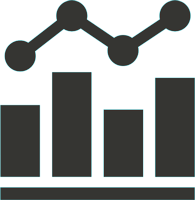
Huge database of exceptional market reports bringing market intelligence to your fingertips.

SSL enabled, we offer you various secured payment options for risk free purchase.